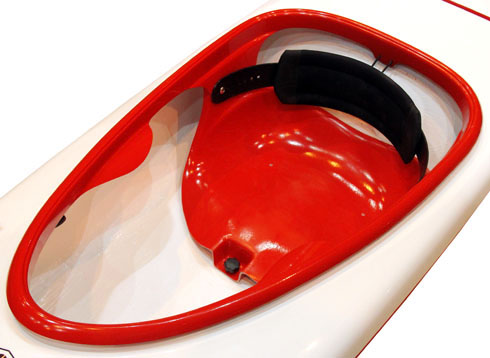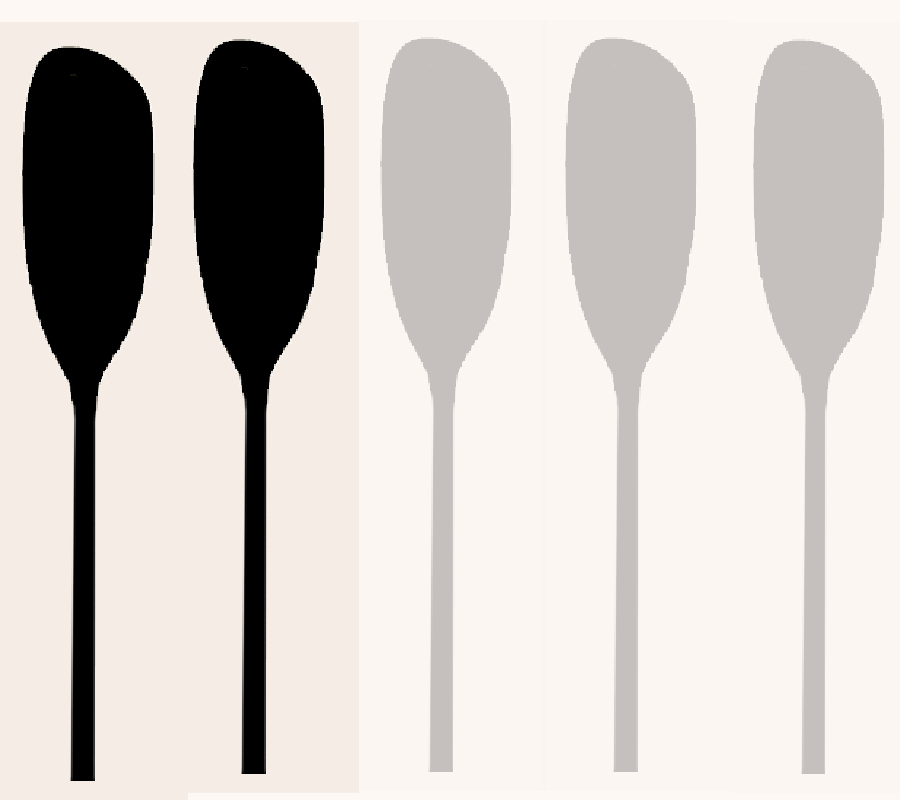The Deets
Material: Polyester/fiberglass composite
Class: Transitional touring
Length: 14’9”
Width: 23.5”
Weight: 51 lbs
Cockpit Size: 35.5 x 16.5 inches
Capacity: 298 lbs
Hatches/Bulkheads: Bow and Stern
Rudder/Skeg: Rudder
MSRP: $1,795
Overview
Introduced by Tahe Marine, the Fit 149 is a composite touring kayak also marketed by BicSport Kayaks as the Adventure 150. Constructed from a polyester fiberglass composite, the Fit 149 weighs in at 46lbs without the factory installed rudder and 51lbs with the rudder. The Fit 149 is designed as a versatile family kayak, built with features that emphasize stability and an affordable price point. BicSports Kayaks states that it “is the logical next step after our SOTs, enabling one to move on to a more physical type of kayaking, without difficulty.” Its spacious cockpit provides an easy in-and-out transition and allows for plenty of generous leg room.
Alex’s Take
The Fit 149 was disappointing upon my first impression. When I first sat in the cockpit, I found it to be quite roomy – and while this feature is typically a benefit in most touring kayaks, in the case of the Fit 149, it was very uncomfortable. Its hard fiberglass seat provided little support and proved to bring discomfort with just ten minutes on the water. While the back band allowed for sufficient support, its thigh braces are outfitted so awkwardly on the cockpit rim that they sit right at your knee. After just a few minutes on the water, the hard flat thigh braces became very discomforting on my knees.
The Fit 149’s primary stability was impressive. The transition into secondary stability was predictable and gave enough freedom for lean turns. Because the Fit 149 was so stabile, its agility was clunky and resisted playfulness on the water. I found that the Fit 149 was rather slow, forcing me to labor through paddle strokes just to bring it to hull speed. Once the Fit 149 was at cruising speed it tracked well but I quickly became bored with its overall performance.
The foot braces are set too high along the side of the hull, creating a dilemma when attempting to use the foot controlled rudder system. Because the rudder needs to be controlled using the top of the foot brace, the high set braces cause your foot to rub against the top of the deck. This makes using the rudder system much more difficult than it needs to be.
Overall, the Tahe Marine Fit 149 was very unimpressive. Maybe I set my expectations a little too high for the Fit but I was utterly disappointed with its outfitting, performance, and overall quality. Maybe Dave will have a different experience with the Fit 149.
Kayak Dave’s Take
The Tahe Marine Fit 149 performed fairly well when I test paddled it in light, flat-water conditions. This kayak tracked well without the use of the rudder and offered solid primary stability. I found that it took an above-average level of effort to get the Fit 149 up to speed. Momentum works for you once this kayak is underway as it has a nice glide and doesn’t take too much effort to keep going. This kayak is not especially maneuverable on edge and this is a shame considering that the Fit 149 has a soft, predictable transition to excellent secondary stability.
What turned me off about the Fit 149 was how uncomfortable I was in the cockpit. For starters, I found that the thigh braces were positioned too far forward in the cockpit and didn’t allow for much purchase while edging. Second, the seat felt very hard (comes without any paddling) and pressure points developed within 5 minutes of paddling. However, the worst part about the cockpit outfitting was the position of the SmartTrack foot pedals. It seemed as though the rails were positioned too high along the inside of the cockpit and this impeded the operation of the rudder control levers which sit on the top edge of the pedals.
There are a few other nuances that are worthy to note. I’m not a big fan of the rudder that was chosen to be included on the Fit series. It performs well when deployed and engaged at shallow angles. About half-way through the range it begins to stall and creates noticeable drag. Furthermore, the retracted position places the rudder blade straight up in the air rather than in the more traditional on-deck orientation. This retracted position is awkward and could interfere with certain self-rescues such as the cowboy scramble and is susceptible to catching wind. The other thing that we noticed was that the adhesive used to secure the rear hatch coaming to the deck had failed and these two pieces were visibly separated thus requiring repair. The front hatch coaming was secure.
Overall, I’m not a huge fan of the Fit 149. It’s difficult to appreciate average performance when the cockpit outfitting is so uncomfortable.
Kayak Dave Rating:






